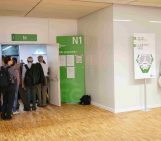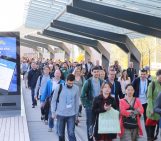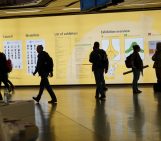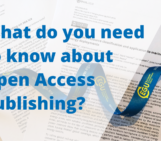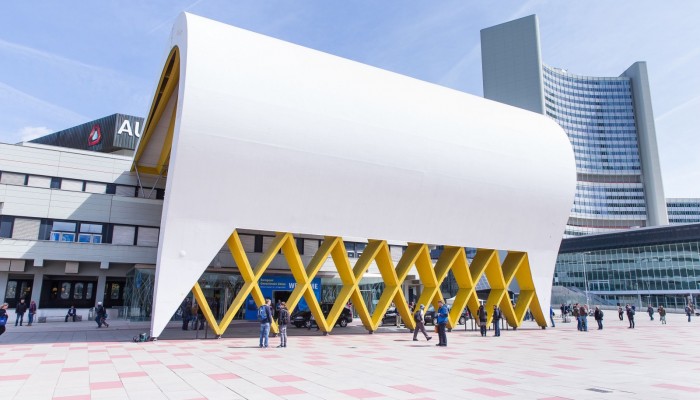
Convening a session at a conference can seem daunting, especially if you are an early career research and a first-time convener. That’s why we’ve put together this two part series to outline the main steps of the process, with more detailed instructions to be published on the 2016 EGU General Assembly in due course. Remember, the call for sessions is open until 18 September 2015!
This post picks up where the first post of the series left off. We’ve tackled how to successfully propose a session; but what happens once your sessions is included in the programme? What does being a convener actually involve? Read on to find out!
My session proposal has been accepted, now what?
The first thing to know is that once you take on the role of being a session convener or co-convener, you aren’t on your own. Our conference organisers, Copernicus, provide full support to those who take on this exciting task. You’ll receive reminders about major deadlines and milestones, such as when you need to rate financial (travel) support applications, and help to meet them via dedicated, easy-to-use online tools.
At a glance, as a convener, you have the following duties (there is a little more detail on each one further down):
- Advertise your sessions to attract abstracts
- Rate financial support applications
- Organise your session in terms of the schedule
- Allocate presentation types on the basis of the abstract submissions
- Select chair persons to run the session
Advertising is everything

Spreading the word about your sessions is crucial to attracting abstracts. (Image modified from: Social Media Communication, distributed via Wikimedia Commons).
This year, the call for abstracts will open in late October and close in January. During this period it is important that you advertise your session within your community to attract people to submit abstracts. You can do this by reaching out to colleagues, collaborators and the wider contacts within your community. And don’t forget the power of social media! Advertise your session on Twitter, Facebook, etc. to reach people outside of your tight network. It may also boost interest to invite a limited number of solicited presentations: you can find some best-practice guidelines here.
Allocating financial support
Early career scientists and established researchers from low and middle income countries who wish to present their work at the EGU General Assembly are able to apply for financial support at the time of abstract submission. This year’s deadline is December 1st. After then, it is the conveners’ job to rate the applications on the basis of the quality of the science being presented. The Programme Committee (PC) then uses this raking to allocate the funds amongst the applicants. For a detailed description of this process, see the financial support pages on the EGU website.
Organising your session
Once all abstracts are in – the deadline for submission of abstracts is 13 January 2016 – it’s time to organise your session! Depending on the number of abstracts your session received, it will be accepted with oral blocks, accepted as poster-only session, or you might be asked to merge with another session and transfer the submitted abstracts to this merged session. In this latter case, you may become a co-convener in the newly created session. You’ll also have to review all the abstracts submitted to your session and decide whether to accept them, reject them or direct them to another more suitable session
Once the content of your session is finalised, you’ll get the opportunity to make your scheduling request. This means thinking about the expected audience size, and back-to-back and no-overlap requests with other sessions. Keep in mind that the PC will do its best to meet requests, but that this is not always possible due to the complications associated with building a huge conference programme!
By mid-February the PC has finalised the conference programme and conveners have one final job left: organise the details of sessions in terms of presentation types. Using the abstracts, you’ll have to choose which are to be allocated an oral presentation slot vs. a poster presentation. You’ll also have to define the length of each talk and make sure that you’ve chosen at least two abstracts from early career scientists for oral presentations. Make sure you’ve highlighted any invited speakers as ‘solicited’ in the programme and order the presentations using the online tool. Finally, be sure to select two chairs per oral block and per poster block.
Final tips and pointers
Armed now with an outline of how to put together a winning session and details of your roles and responsibilities as a convener, why not give it a go? You’ve got until the 18th September to submit a session proposal!
As final encouragement, we spoke to some early career scientist who’d convened sessions previously. Here are some of their top tips and what they had to say about the experience:
“Don’t be afraid to give it a go! Get at least one person in your team who has convened before, even if it is someone who is not that active in all organising activities. It is good to have someone who can offer advice at all stages.” Anne Pluymakers (Tectonics and Structural Geology Division ECS Representative)
Sam Illingworth, Lecturer in Science Communication and former PC ECS Representative, shares some advice on actually running the session: “Remember to arrive to your session at least 20 minutes early, to check on the tech and upload all of the presentations. Also, if there is a no show then don’t panic. Either prepare a back-up presentation that you have, or host an extended Q&A where you discuss the talks that you have heard so far and/or a prominent issue in the field.” Also, be prepared for the dreaded moment when the audience haven’t got any questions for the speaker: “always come up with a back-up question to ask the speaker, in case there are no other questions forthcoming in the Q&A,” says Sam.
Sam’s final top tip is one we couldn’t agree more with, after having invested a lot of time and effort in organising a session, make sure you enjoy it!


